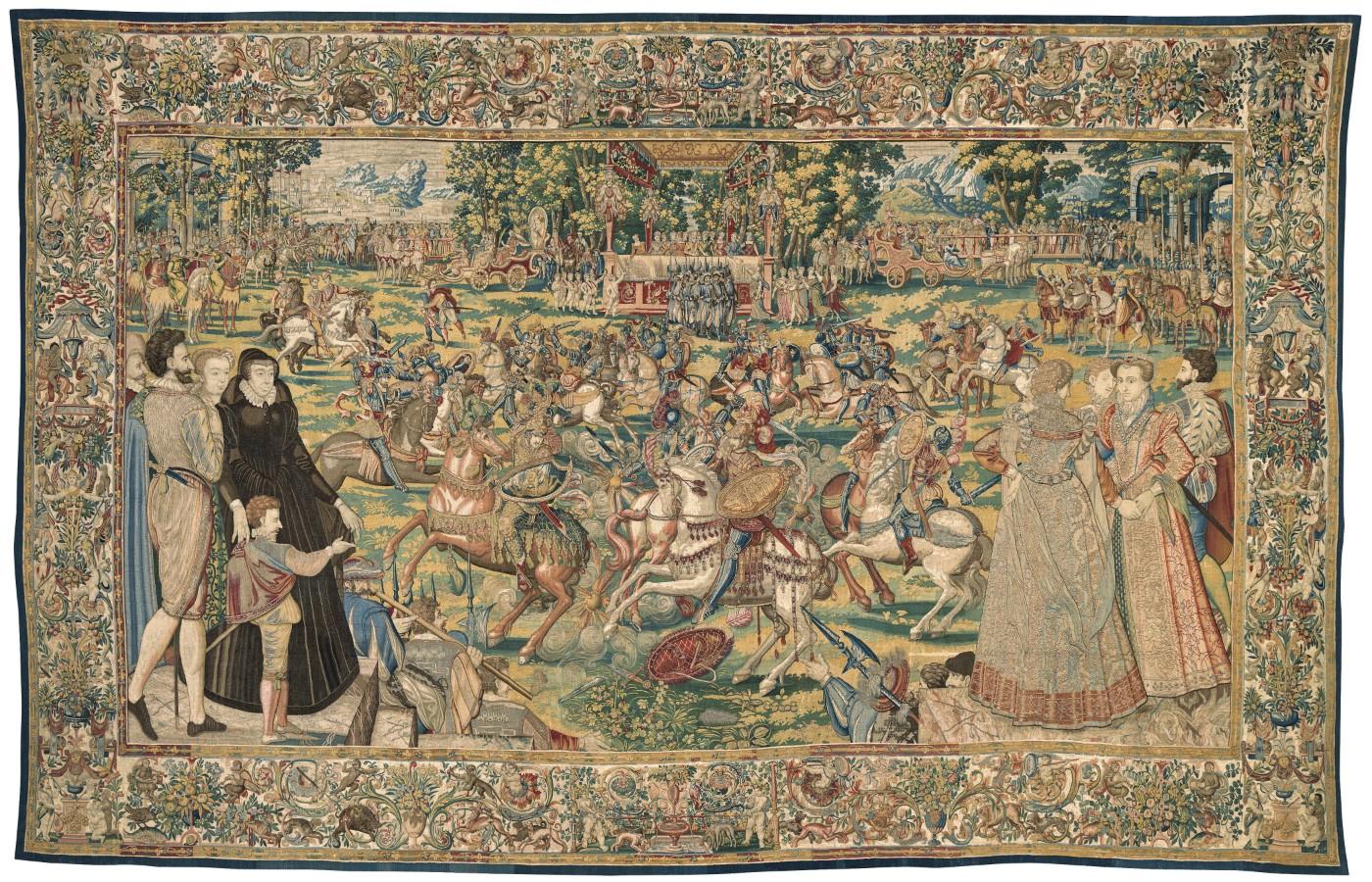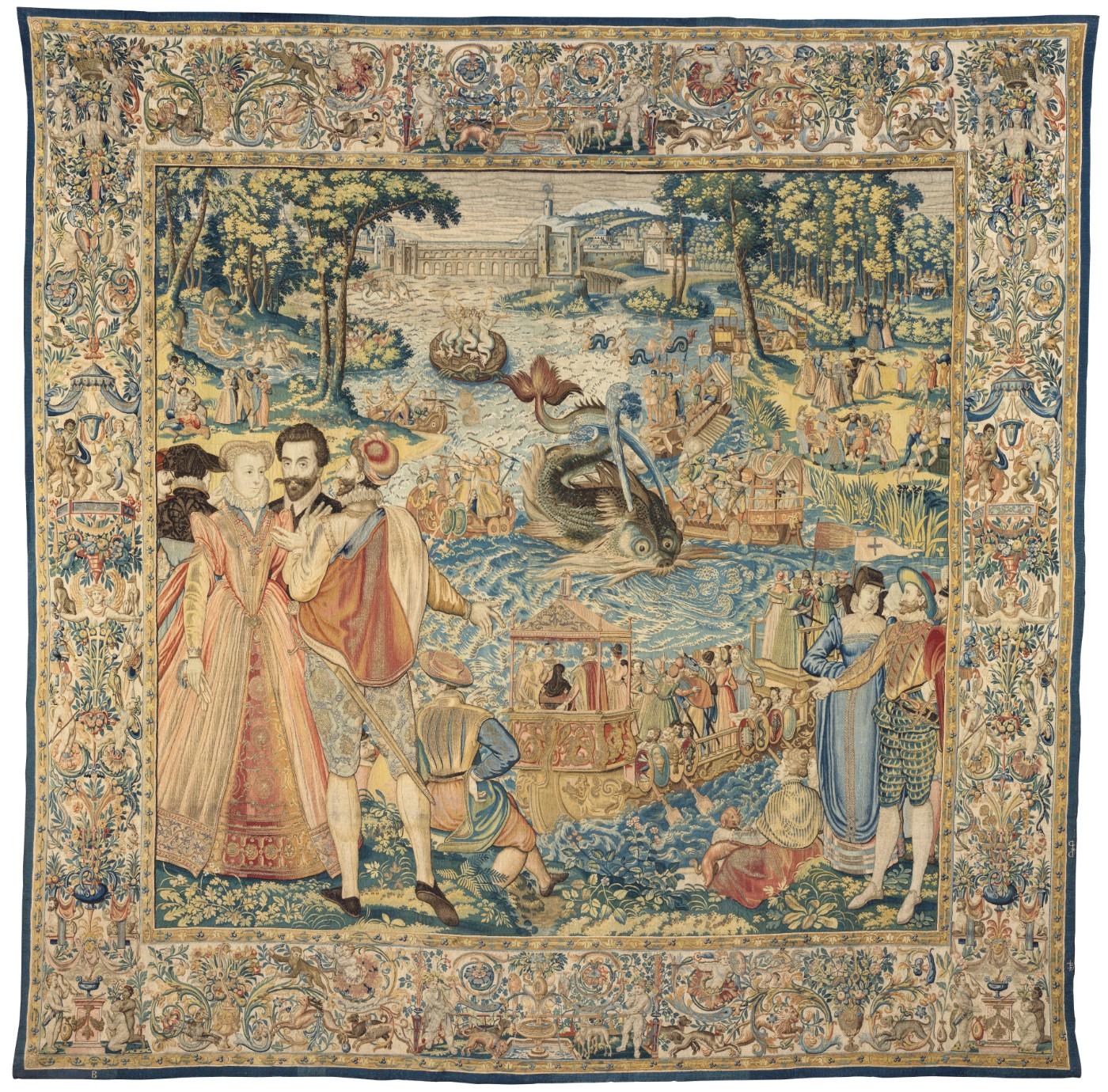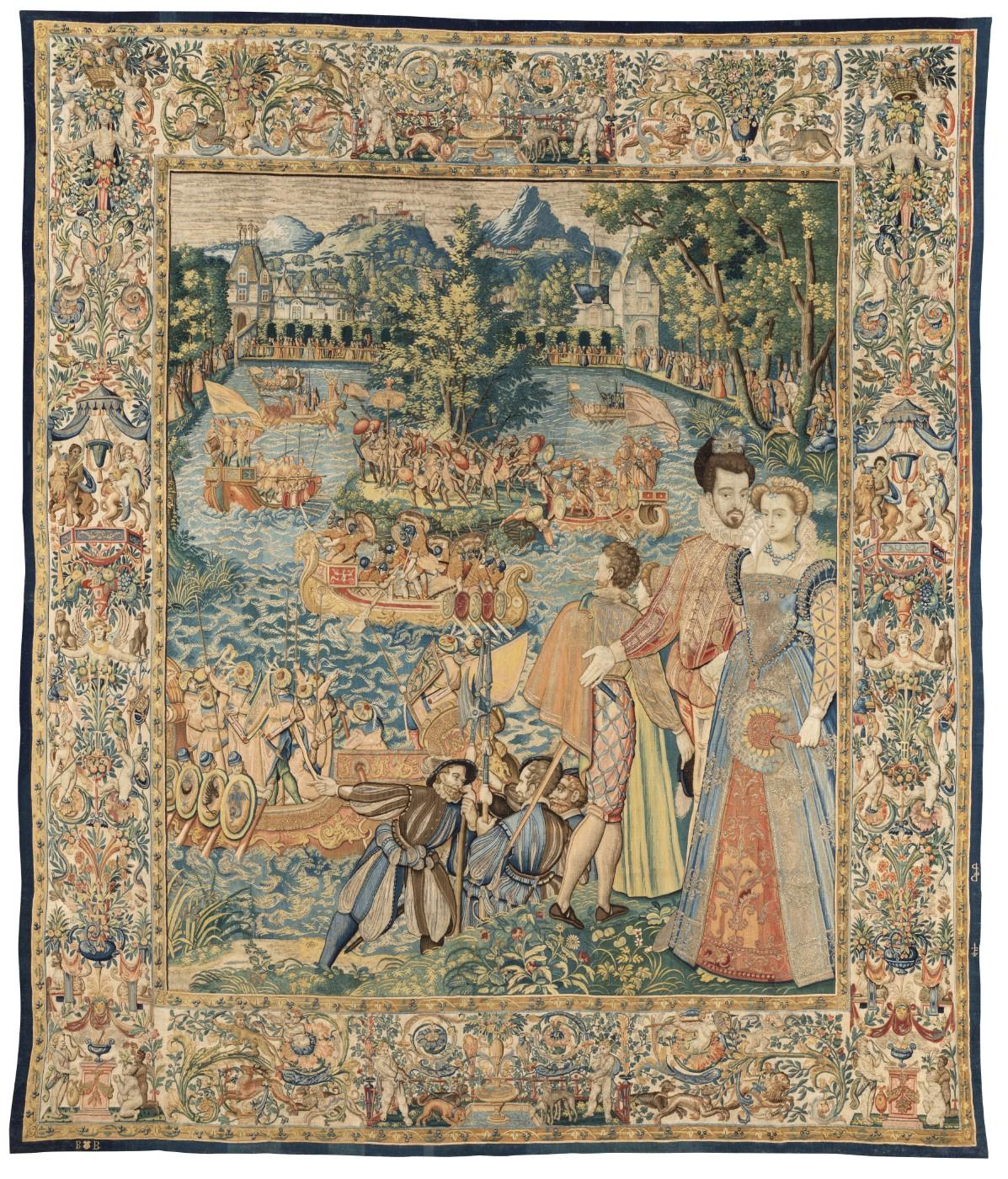“Among the most admired and ambitious artistic endeavors of their time, the Valois Tapestries embody the pageantry, splendor and political intrigue of Renaissance Europe,” says William Griswold, director of the Cleveland Museum of Art. “We are delighted to have collaborated with the Uffizi to bring six of these remarkable tapestries to Cleveland.”
“This exhibition presents Cleveland audiences with a unique opportunity to view this extraordinary set of tapestries, now gloriously transformed through a painstaking, multiyear restoration process, which has been made possible by the generosity of the Friends of the Uffizi and their major benefactor, Mrs. Veronica Atkins,” says Eike Schmidt, director of the Gallerie degli Uffizi.
Woven in Brussels with wool, silk and precious metal-wrapped threads, the 14-foot-high hangings are rich in both their materials and intricate subject matter. Life-size, full-length portraits of the French king, princes and princesses, and prominent courtiers are situated prominently in the foreground of each tapestry, locking eyes with the viewer and presenting detailed scenes of court pageants and extended celebrations called “magnificences.” These lavish events were hosted by Catherine to mark family reunions, diplomatic visits or political events. Extending over several days, each “magnificence” typically featured music, dance, theatrical performances, fireworks and martial enactments in elaborate, specially constructed settings. The Valois Tapestries are the most vivid and detailed surviving visual record of these signature events of the Valois court.






























